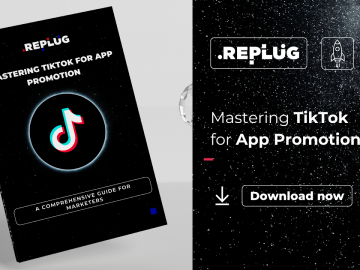Does your brand have a website, and what’s it for? The Drum Network hosted a panel to get to grips with one of the web’s most fundamental components.
“The WorldWideWeb (W3) is a wide-area hypermedia information retrieval initiative aiming to give universal access to a large universe of documents.” So reads the first line of introductory text on the first-ever website. Broadly, the definition still stands. But what of those ‘documents’ and how to access them?
Traditionally, websites – a collection of webpages – were the primary entry point for the web. But the rise in popularity of mobile phones, and the vast improvement in mobile technology, has seen a shift to other means of access, such as apps and social media platforms.
For any brand worth its salt, though, a website should still be treated as essential, says Chanelle de Nysschen, group creative director for innovation and experience design at Merkle. Because, she says, “you don‘t build on someone else‘s land.“
“I think yes, there are lots of platforms now, and lots of places you can go to get eyeballs. But the website is the one place where your brand can be entirely itself. It’s the place where you can differentiate yourself from other people and other brands. It‘s a place where new customers come to judge you and where your longtime fans fell in love with you. Every brand needs a stellar website.”
Graham Lubie, vice president of digital, Wasserman agrees. He believes that if you’re not completely promoting your own brand, you’re probably promoting someone else’s. “If you don‘t own your own web presence, and have the ability to really create your brand identity, not just with the visual, but all touch points… you are at the whim of Facebook, TikTok, or any of the other channels,” he says. “And at that point, you‘re reinforcing their brand versus them reinforcing your brand.”
WWWhy?
Getting the ‘why‘ right is crucial in web design, says Francis Williams, head of experience at Hallam – and is something clients often don‘t quite nail. “What a lot of marketers still haven‘t done is understood, ‘what is the role of my website?‘” he says.
“I‘ve got a few clients I‘m working with where the big challenge is the fact that they have a website because they’re trying to deliver a brand experience. But the very nature of the website means it’s there for convenience, like e-commerce. And that’s in line with what‘s happening after the website, and what the users are really caring about.”
For Mike Weir, head of behavioral science at Impression, lack of focus is indeed an issue when designing websites. “If you don‘t know what you‘re designing for, it becomes an increased level of challenge, doesn‘t it? And then obviously too with the research side of it,” he says.
Weir disagrees with de Nysschen though that every brand needs a website. “Increasingly, it’s only when brands reach a certain scale that they definitely need to have a website. I don‘t think all brands need to be born with one though.”
“I think that actually, if you start to look at things like social media marketing, there are some incredibly effective brands that spring up on things like TikTok that then go on perhaps to mature into websites.”
But, he adds: “There‘s a level of brand maturity at which it’s expected that you will have a website from a customer perspective.”
3D websites
In terms of build approaches, Andy Eva-Dale, chief technology officer at Tangent, says architectures are more interesting than languages when building sites.
Williams says he feels no-code options are more common than ever, having overcome some of the issues to previously hinder them. Webflow, he says, can deliver particularly good results.
De Nysschen adds that while VR, and to an extent AR, might not yet have fully lived up to their potential, 3D integration on websites is certainly in demand currently from clients – and provides ‘amazing results’.
“Things like 5x dwell times, improved SEO – because Google really appreciates those elevated experiences that keep people dwelling,” she explains. “We‘re seeing things like 40% fewer returns, if someone interacts with an object in AR, because it feels so much more personal, there‘s so much more awareness of what they‘re getting. And up to 65% more likely to purchase after getting a full 360-degree spin-around and getting to interact and see features.”
She adds: “For us continuing to integrate 3D in completely novel ways, whether that‘s for commerce, or for amazing storytelling, branded experiences, is definitely a big trend we‘re very excited about.”
Digital before marketing
All of this has led to a massive shift in the nature, and importance, of UX designers within organizations. Williams says they now hold “a more strategic role.”
“You‘ve got your digital director, or your experience director that knows this stuff straightaway,” he explains. “And they‘re asking how the marketing strategy is fitting into the digital strategy. So that dynamic’s completely shifted.”
Eva-Dale says changing client demands has indeed given rise to new roles requiring new skillsets – not least around conversational design. “One thing we‘ve seen probably in creative has been the role of CX being more important than anything before with the spawn of AI and conversational interfaces. Conversational design, which is a different medium – how you convey a brand through conversation or tone of voice of a particular brand – is a whole different part of creative that we‘re certainly seeing now.
“The products we‘re building have pushed our teams to expand to new areas and have pushed them out of the normal wheelhouse. So almost like a copywriter-meets-UX-meets-brand-type role.”
Williams says he feels that his own role has changed to the point he now sees himself as a “human-system designer”.
More content
Weir believes the technological leaps and bounds underway pose unexpected challenges for brands and their websites. “I think that AI, as much as it might increase relevancy, might also increase the amount of content,” he explains. “So actually, it could create a problem where people are going to look for even more advanced filters, and even better ways of filtering out content and irrelevant messages. So content is going to have to find ways to be more succinct. Because I think at the moment, the CRM platforms are pushing for more emails, more messages, more touch points, more content.”
De Nysschen says she feels the future of AI could well lie in personalization. “What we‘re starting to do is work with clients on having their websites, integrate conversational agents, transactional agents that can surface any information you want, and kind of customize the website for you as you‘re talking to them,” she says.
“But I think longer term, it‘s going to be about how those bots interact with the Google search or personal assistant bots, to really help people just find information and products and things that much faster, that much more conveniently.”





